Winter Hiking at South Moat Mountain, New Hampshire
Looking for a winter hike in New Hampshire? Our trail guide to hiking South Mount Mountain in the winter includes what to bring, trail tips and more.

If you enjoy winter hiking, South Moat Mountain is one of my favorite snowy hikes. The trail is located in the Northeastern corner of White Mountain National Forest in New Hampshire. It’s not an easy trek (even in the summer), but the relatively short distance makes it a good out-and-back option for cold-weather conditions.
I’ve hiked South Moat Mountain in the winter a few times and I always look forward to the brisk challenge, low trail traffic, and great views from the top. There’s nothing quite like looking out over the white wonderland of the surrounding mountains and valleys!
Like any winter hiking adventure, though, it’s important to be prepared and know what to expect. In this post, I cover everything you need to know about doing a winter hike on the South Moat trail in the Whites.
This post may contain affiliate links.
South Moat Mountain Basics
Trail Basics
Trail Description
South Moat Mountain is just around the corner from New Hampshire’s popular mountain town of Conway. It’s also a hop, skip, and jump from the scenic Kancamagus Highway, making it a great destination if you’re not from the area.
South Moat Mountain is one of the beautiful peaks that make up the full 9-mile Moat Mountain Trail in the White Mountain National Forest. I love it for its multiple vista points, one brief (but fun!) section of scrambling, and a beautiful river that is frozen over in the winter.
Save this post!
Enter your email & I'll send this post to your inbox! You'll also receive my weekly newsletter full of helpful advice for planning your adventures.
Preparing for Winter Hiking in the White Mountains
Here’s the thing, everyone will tell you this trail is best hiked from May through October, and while there is plenty of truth to that, the White Mountains are something to behold when they are snow-covered and well, white!
That being said, winter hiking means you need to take a few more precautions than usual. To help you prepare, here are my best tips on what to bring and what to know while hiking South Moat Mountain in the winter.
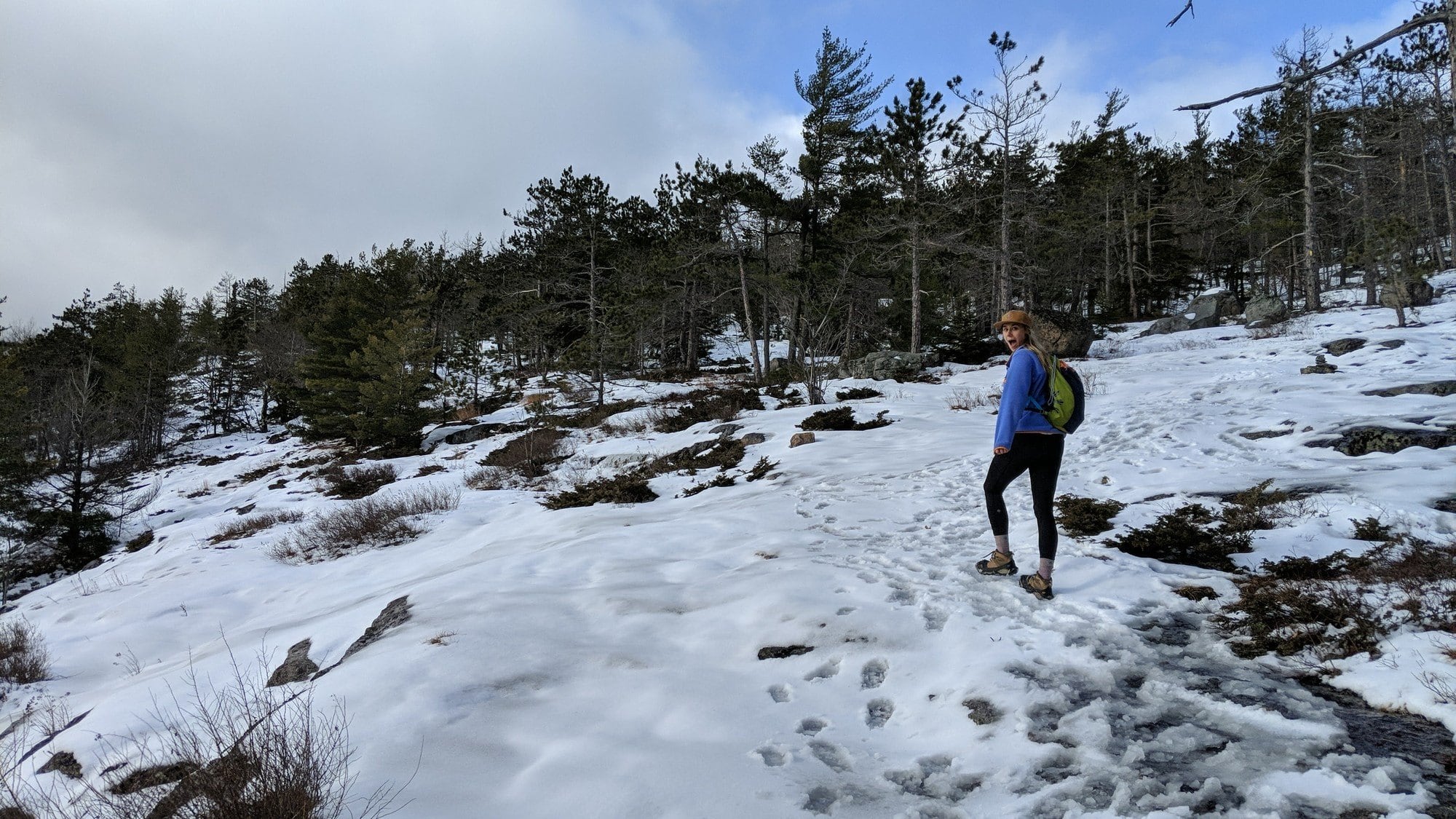
What to bring
I’m sure you’re well-advised on what to bring on ‘normal’ hikes, but as I’ve mentioned above, winter hiking does require a bit more planning and preparation. Furthermore, the White Mountains in New Hampshire are notorious for their rapidly changing weather, so please take your winter hiking preparation seriously.
Here’s what I recommend packing for your South Moat Mountain winter hike:
- The ten essentials for hiking
- Microspikes (check trail conditions and snow levels…it may warrant snowshoes)
- Trekking poles with snow baskets
- Gaiters to keep snow and water out of your socks and shoes
- Headlamp
- Warm, non-cotton layers
- A hot beverage
- Gloves
- Neck warmer
- Wool hat
- Windbreaker or lightweight hiking raincoat
- Extra layers
- Tissues (underrated winter hiking gear!)
What to know before you go:
Additionally, here are a few essential tips before setting out on your hike:
A note about winter hiking safety
It’s important to take winter hiking seriously and come prepared. Check the weather and pack accordingly. Conditions can quickly change for the worse in the White Mountains and a slip on icy granite can easily cause a twisted ankle. Pace yourself, be smart, and stay on the trail. It can be easy to get distracted and miss a trail marker when things are snow-covered.
On one of my hikes here, I saw two people hiking up the mountain late in the afternoon without proper footwear or attire. They were struggling to get up a small section and it was clear they were going to be hiking back in the dark. Not a great situation. It’s crucial not to underestimate safety and preparedness in the outdoors, especially in the winter season.
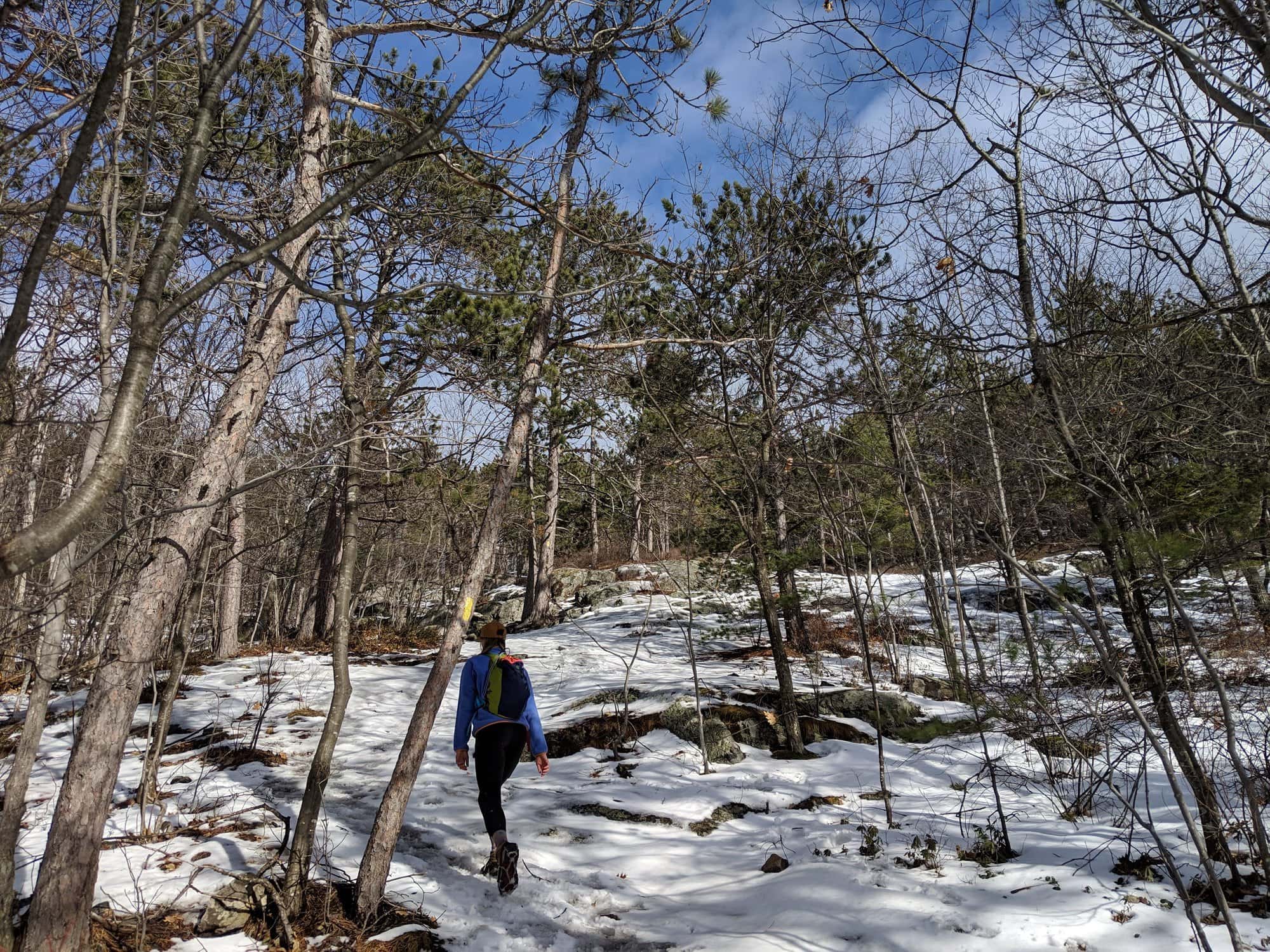
South Moat Mountain Winter Trail Guide
The trail begins at the parking lot where there’s a visitor’s board with a map and some general information. To your left, you’ll see a big field where the trail begins marked by blazes until it narrows down to a two-person wide walking path.
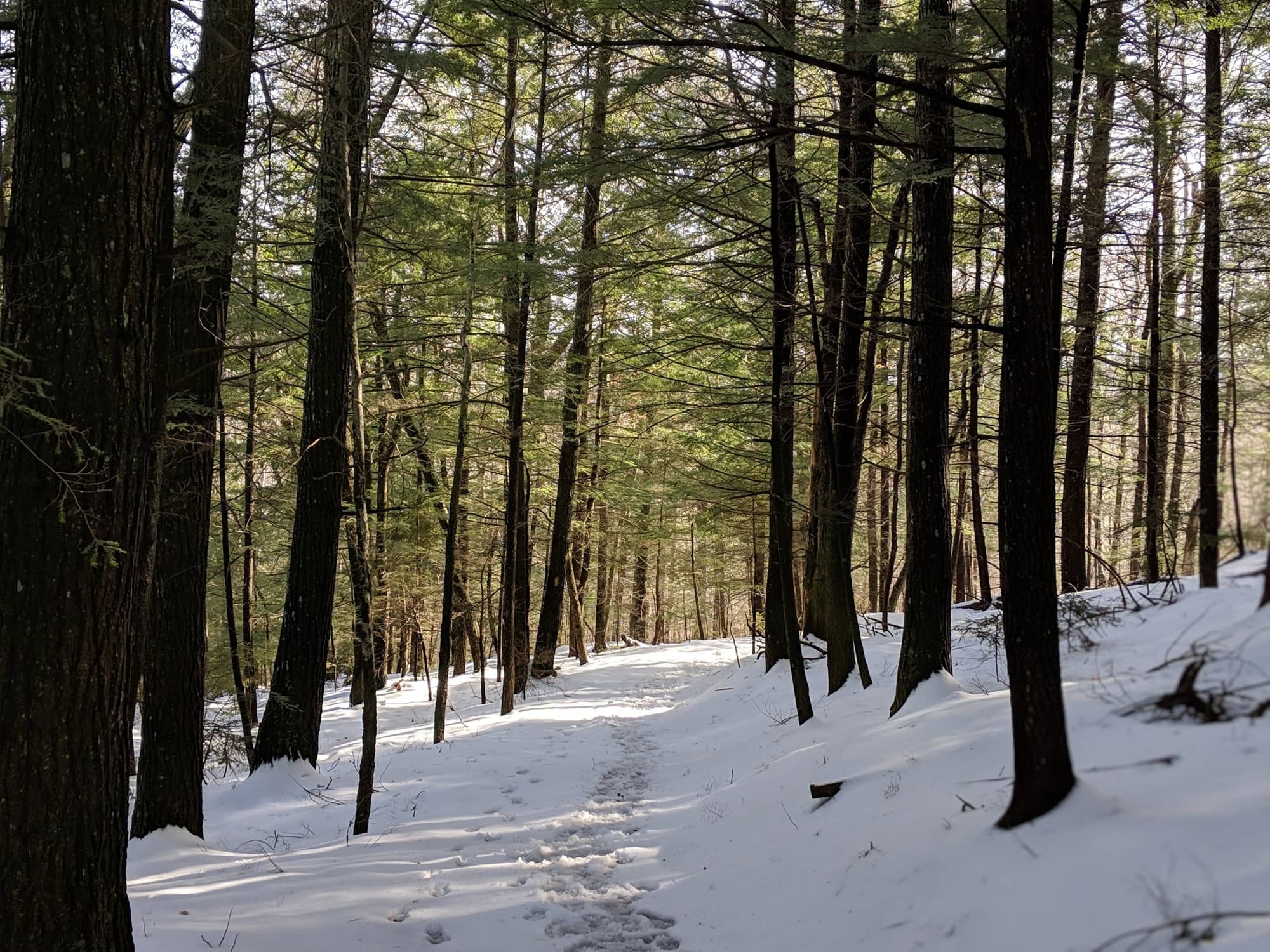
We hiked South Moat Mountain in late December when there was about 3-4 inches snow on the ground. The weather was fairly warm and sunny and for that reason, things were a bit more wet and slippery than usual. We were definitely psyched to be wearing our microspikes.
The first few miles of South Moat Mountain are pretty mellow trail as the switchbacks lazily wind through the pine-forested woods and took is over a small river by bridge.
The good news is that there are no other trails that connect with South Moat Mountain, so we could get lost in conversation without having to pay too close attention to the trail markers.
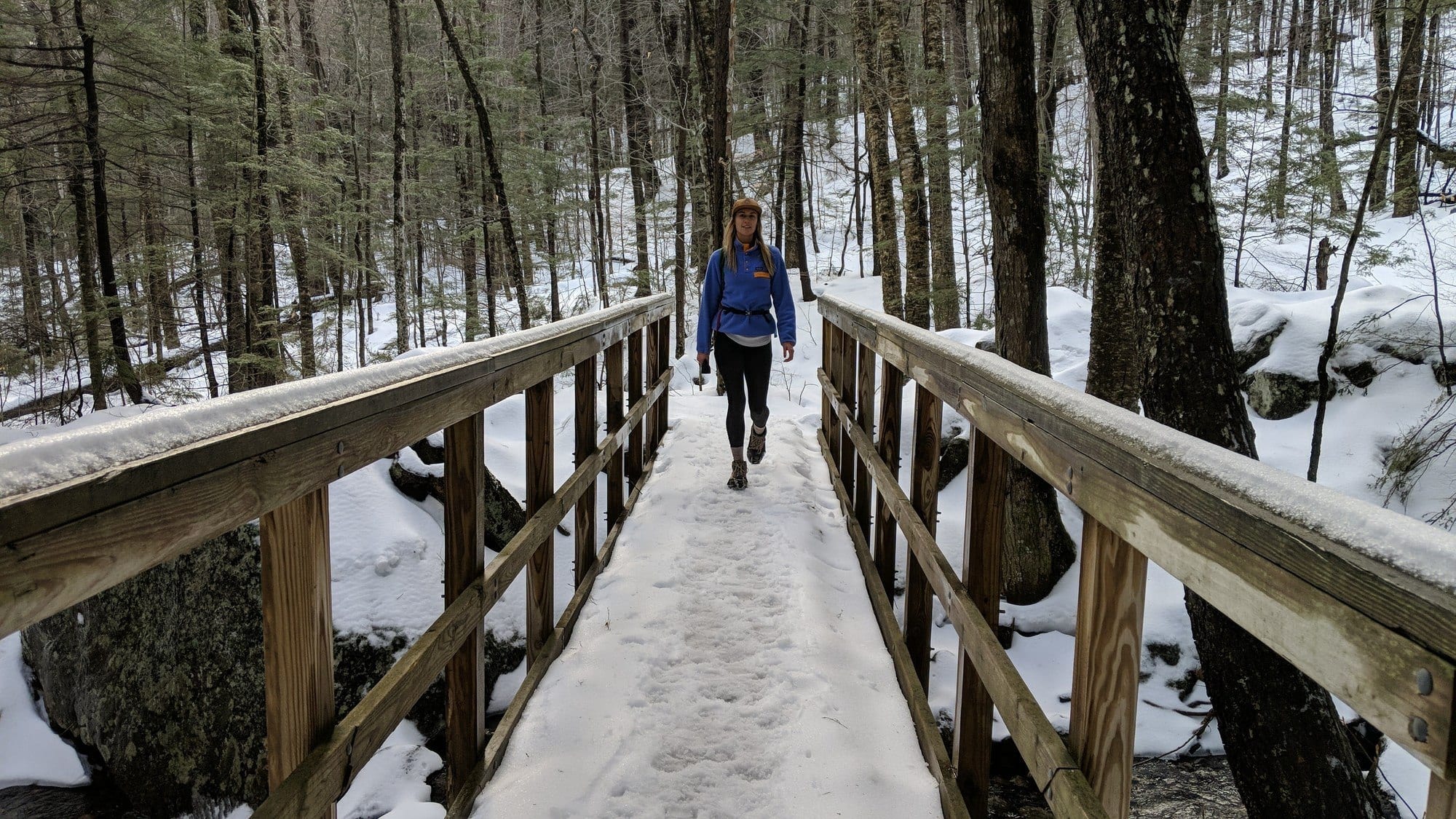
A couple of steep pitches and one very brief rocky scramble brought us to the first vista: a wide-open field with panoramic views of Mount Chocorua, the Whites, and the Ossipee’s. It’s pretty spectacular but it’s also just the first of many views.

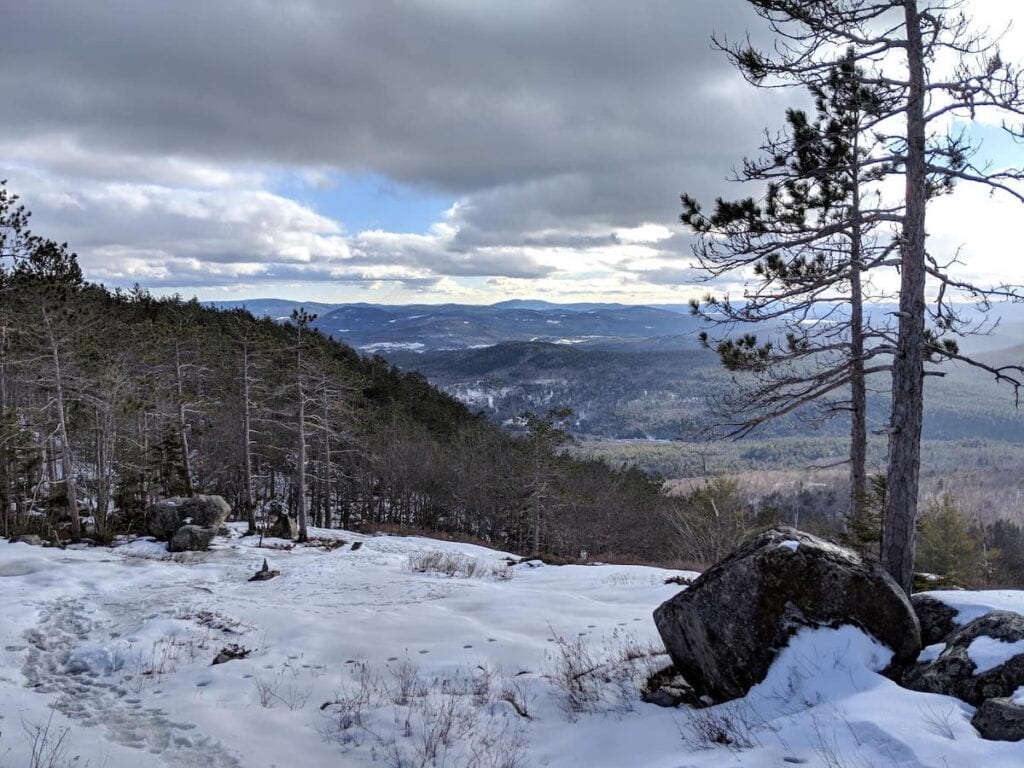
Another mile or so of following the trail blazes and we found ourselves climbing up the last few ledges before the summit of South Moat Mountain. The temperature was still relatively warm, so we decided to pause for a few minutes to dry off, layer up, and take some pictures before exposing ourselves to the windchill at the top
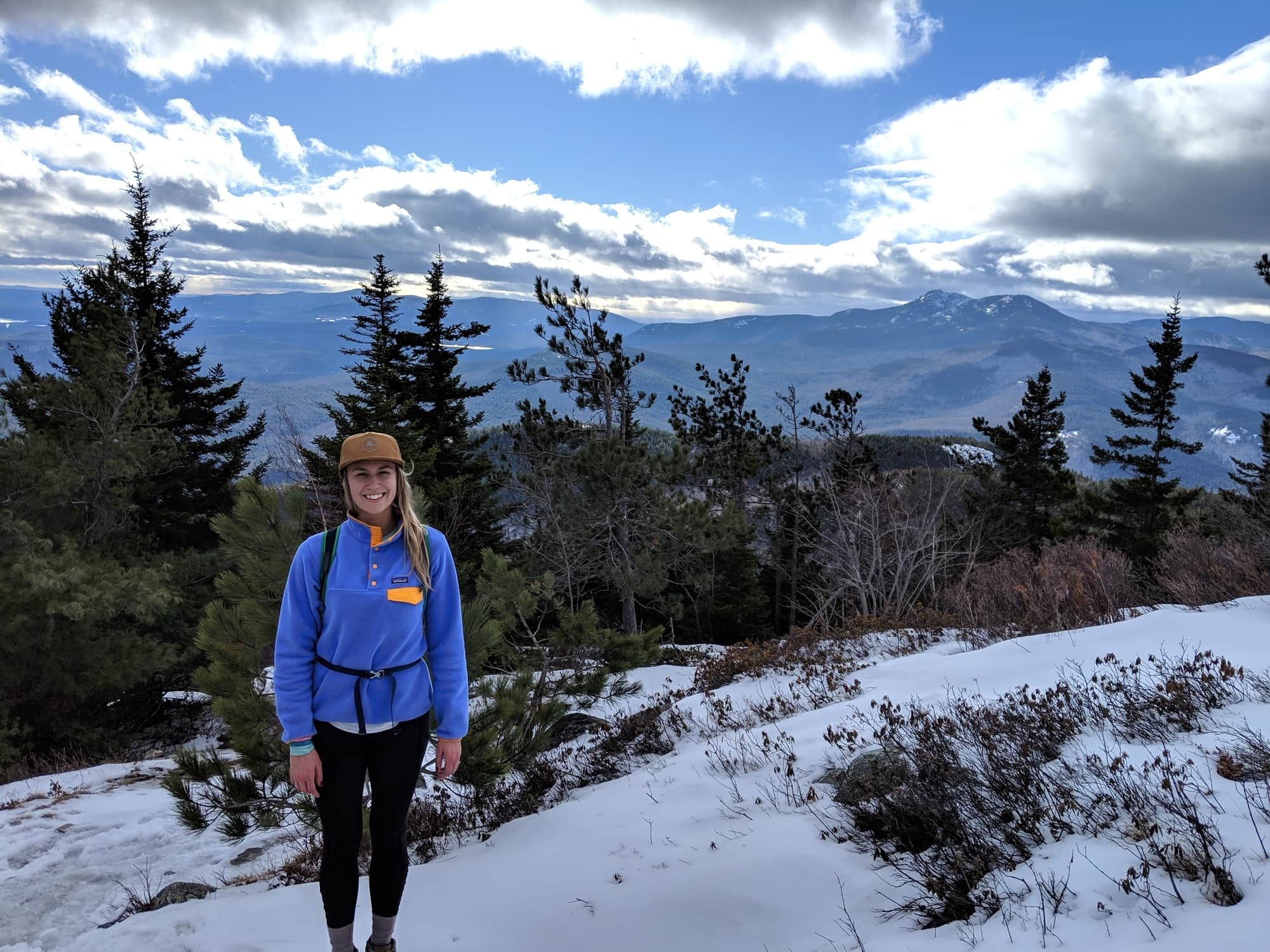
The summit views at the top of South Moat are amazing with an expansive lookout over White Mountain National Forest and Cranmore Mountain, a local ski hill directly to the right. Hiking South Moat Mountain in winter doesn’t make for the most relaxing break at the peak due to the temperature, but on a sunny day, the views are still amazing!
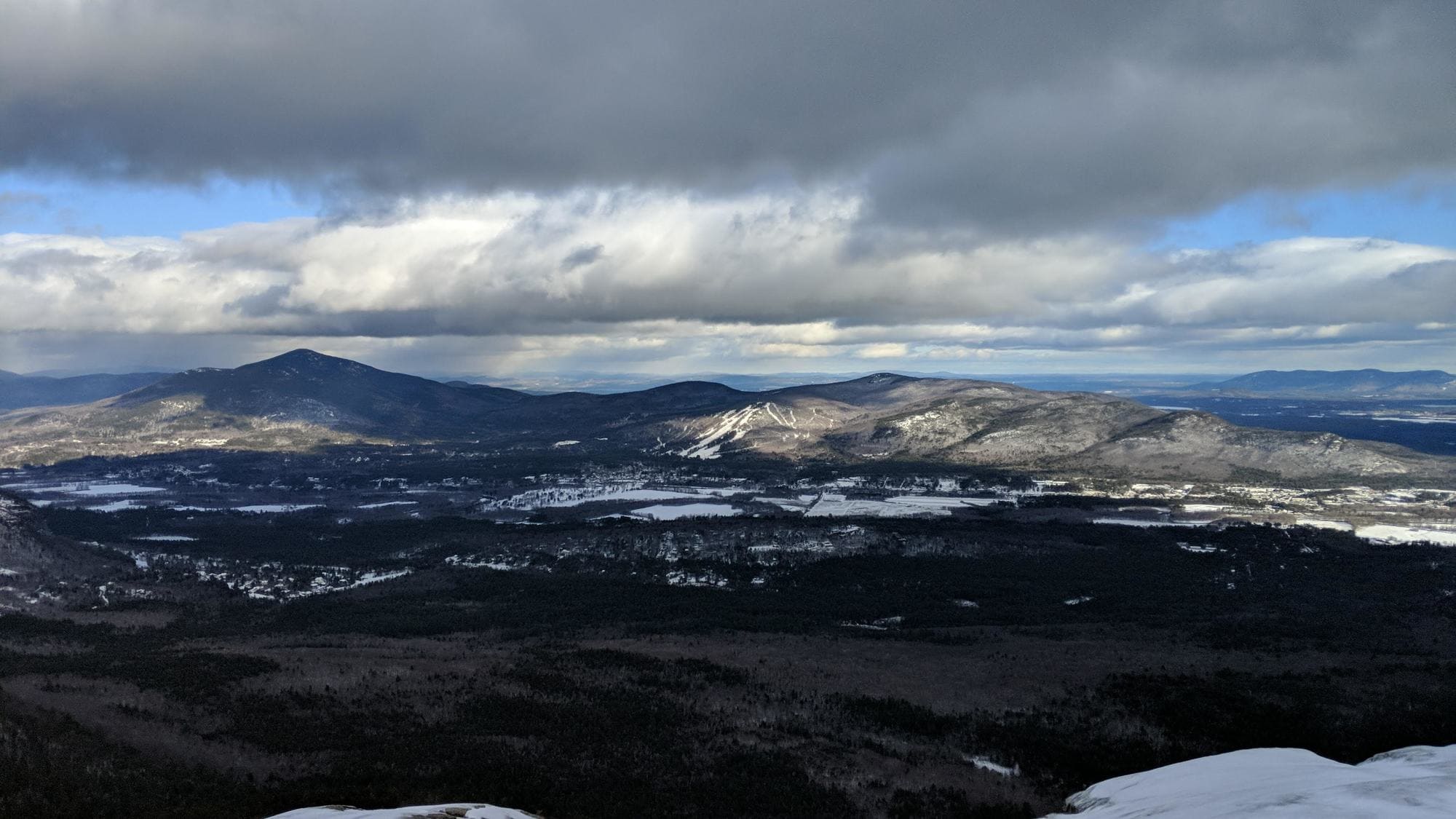

We had originally planned to eat our chili and drink some hot liquids to refuel there but there wasn’t much protection from the wind. A quick walk down to a rocky ledge proved to be the right spot, where we still got to take in the views and eat some warm food.
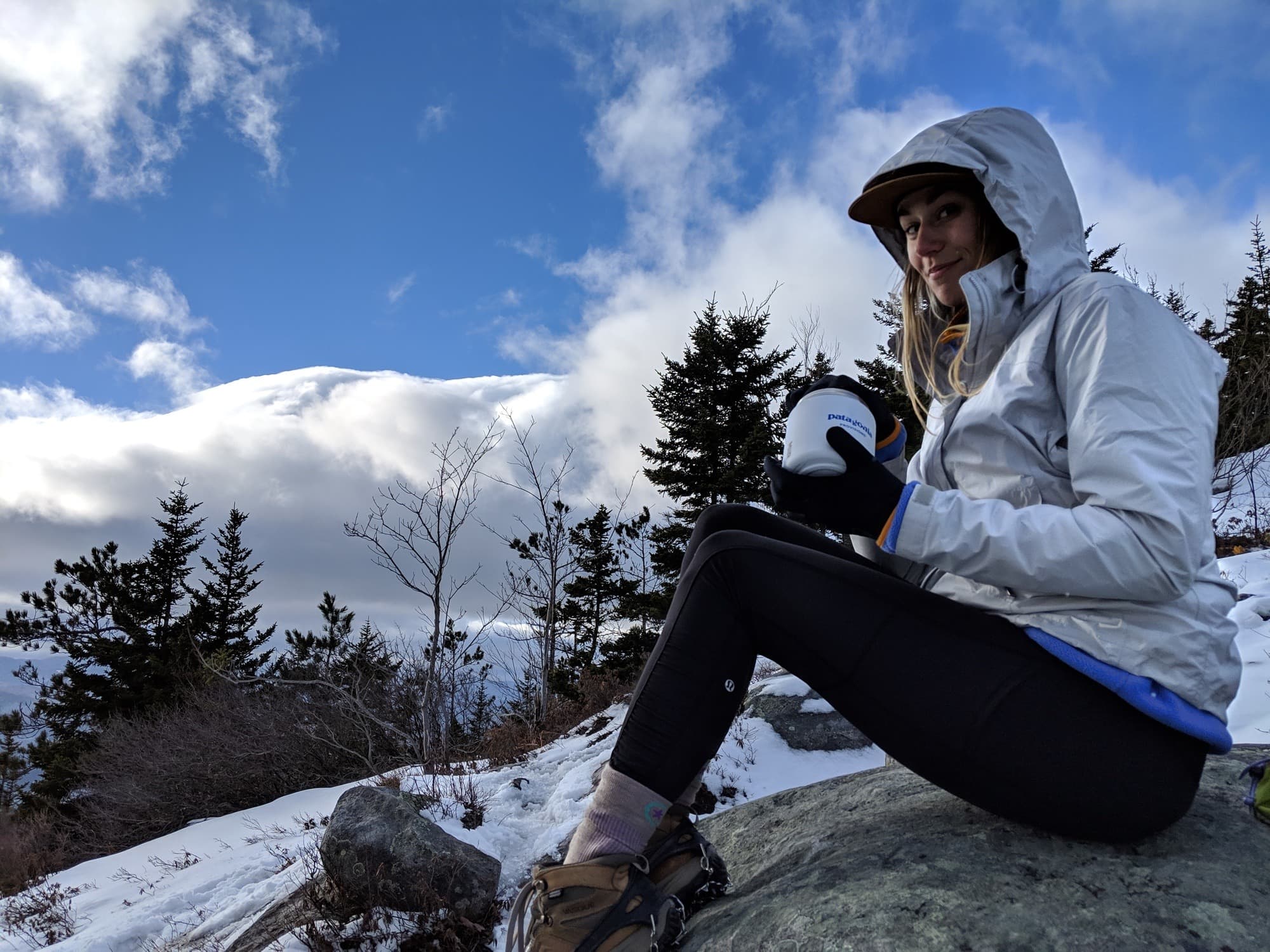
In true winter hiking fashion, the hike back down was pretty slick with a few good wipeouts along the way. Again, we were thankful for our microspikes. Although it started to get even colder as the sun began to set, it cast beautiful pale winter light through the trees and sparkled on the snow. Just another reminder of why hiking South Moat Mountain in the winter is so worth it!




